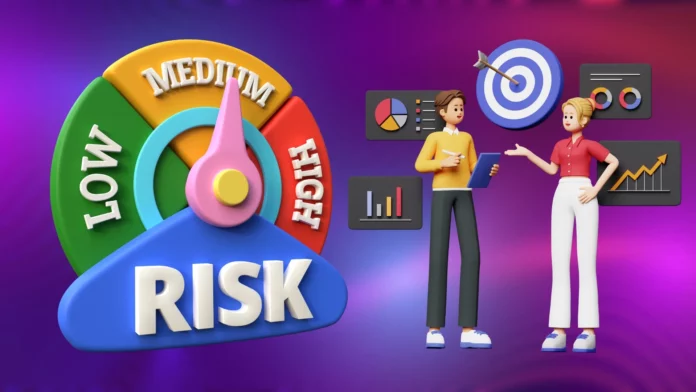
- Risk management is a strategy used by traders to reduce their losses
- These rules help traders to avoid emotions while trading.
- Risk-Reward Ratio, Put Option contracts, one percent rule are some popular risk management strategies.
We all know that trading is a risky business and all your profits and gains can be lost in just one wrong decision. After all, it’s money and nobody wants to lose it. Therefore, it’s necessary to identify and analyze your risks, before putting your money.
Common Risks Involved in Trading
Trading involves guessing the trend of the market and based on your assumptions deciding to buy or sell the stocks. A trader closely observes the different political, economic, and natural events going around. Based on his experience, he judges the power of each factor in market fluctuation and decides the momentum of the market.
Risk Management
Traders use several strategies to minimize their losses. Although risks are for both an investor and a trader, an investor has the advantage of time. He can wait for the market to gain back the momentum in his favor, whereas a trader needs to make quick decisions.
Strategies
Let’s look at some of the popular strategies used by traders to prevent fatal losses.
- Risk-Reward Ratio:
As the name suggests it’s the ratio of risk involved in a risk to the reward expected. Precisely it becomes, the ratio of money a trader will lose if the trade goes wrong to the money he will earn if the trade goes well.
Risk-Reward = Money to lose if wrong prediction / Money to gain for correct prediction
Ratio
Let’s assume a trader calculates his risk-reward ratio to be 1:4.
This means that for every $1 he risks, he expects to earn $4 in profit.
This ratio is subjective depending on the trading asset and the trader’s risk appetite. An experienced trader with trial and error may calculate the risk-reward ratio suited for him. Experts generally consider 1 / 3 as an ideal risk-reward ratio.
- Hedging
Hedging in trading is analogous to insurance in the real world. In insurance, let’s say travel insurance, the traveler tries to protect himself from unexpected situations in a foreign land, thus having support. This support will not cover all his losses but will reduce them.
- Put Option Method:
Linda buys 50 shares at $5 each. Now, these shares are volatile, and she needs an option in case of loss. The option will be a contract between her and the hedge provider, which enables her to sell those shares at a set price, say $4, for a fixed period.
This reduces her loss in the worst case of prices falling below $4 as she has an option.
- Diversification:
A strategy where a trader diversifies his portfolio by investing in assets that are not related to each other. This includes investing in companies of different sectors. An example of a diversified portfolio can be:
| D-Mart | Retail |
| ICICI | Private Bank |
| SBI | Public Bank |
| RVNL | Railways |
| TCS | Info Tech |
| Mahindra | Automobiles |
| ETF Gold | Gold |
This diversified portfolio includes investments in various sectors, which helps protect the trader from significant losses, even if some individual shares perform poorly.
3. One-Percent Rule
This rule says that a trader should not put money, more than 1% of his capital, into a single investment. If Linda has $500 to invest, according to the one percent rule, she should not put more than $5 into a single trade. This rule is also modified according to the traders’ risk appetite and experience. Experienced traders may go up to 2%, but beginners should stick to the thumb rule.
- Stop-Loss and Take-Profit level
Traders are often caught in the whims of emotion while trading and greed, fear, stress, and similar emotions may affect their practice. To keep these emotions out, traders set a Stop-Loss (SL) and Take-Profit (TF) level, which determine the exit points for the trader.
- Stop-Loss
If a stock goes down, the trader is at a loss, but he may not exit in the hope that it will rise, increasing his risk. Stop-loss is a set price, lower than the current value, where a trader exits the market without a second thought to reduce his loss.
- Take-Profit
If a stock rises, the trader may not exist in the greed of earning more profits. Take-Profit is a set price, above the current, where a trader will exit the market without second thoughts.
Traders may use technical analysis strategies like Support and Resistance Levels, Moving Averages, and others to determine the optimum SL and TF levels.
Final Thoughts
Readers should understand that, even if every trade doesn’t promise a reward, each trade comes with a risk. It is important to have a plan and strategy in the case of losses. A trader should not rely on emotions during trading but should follow set rules, however hard he may find them.























